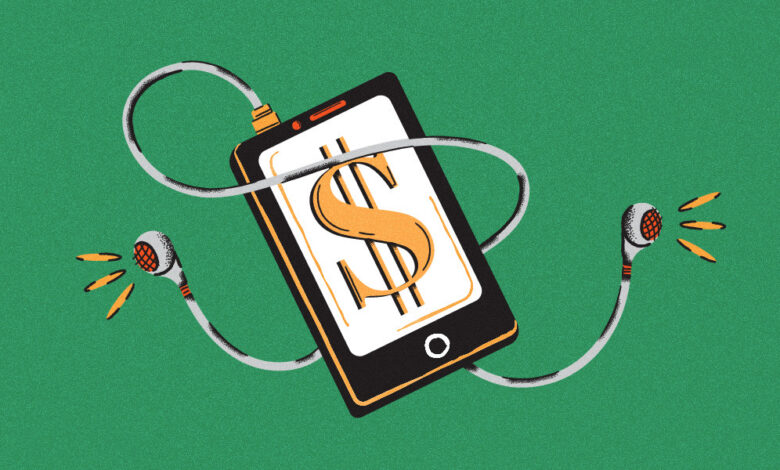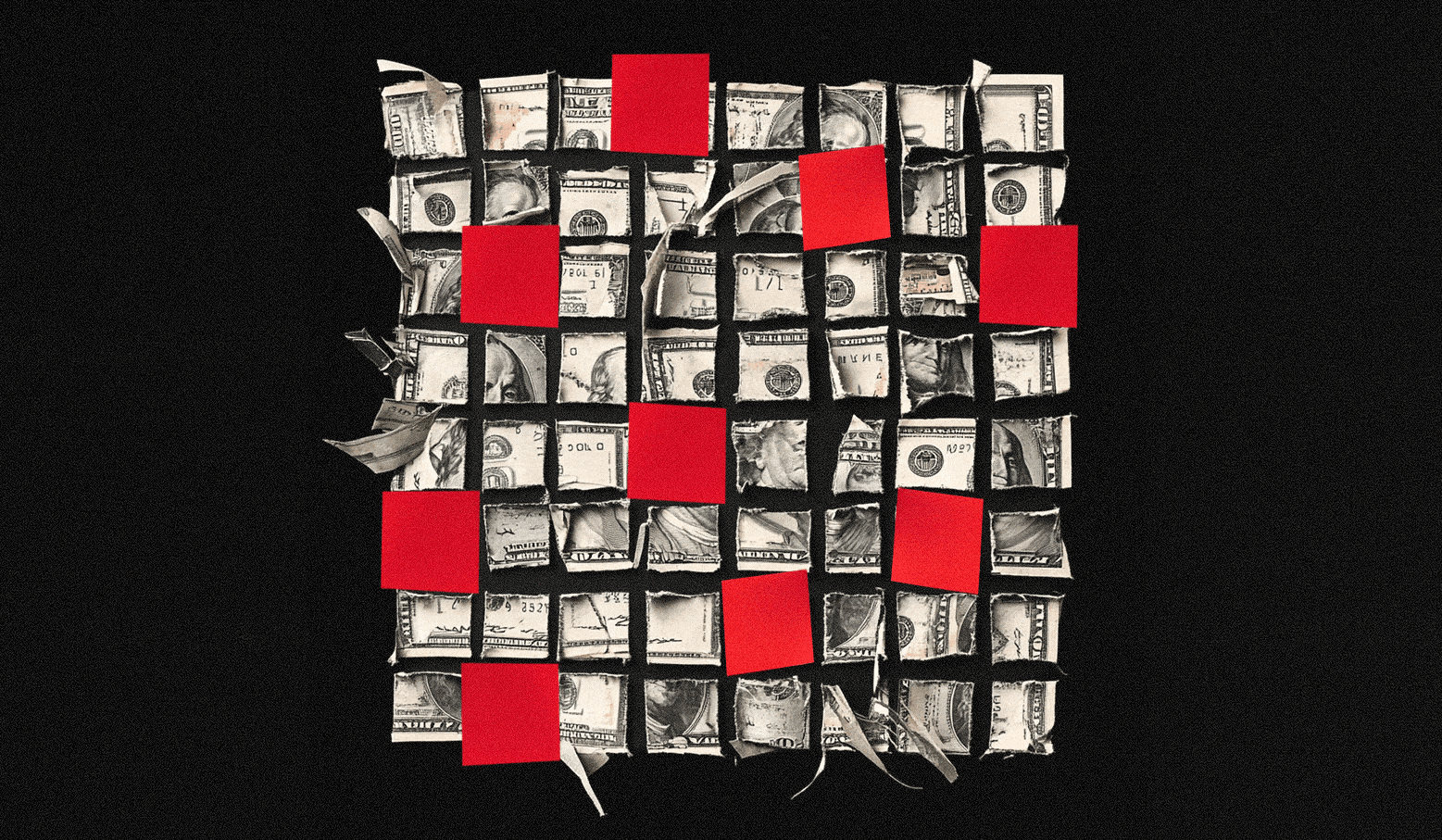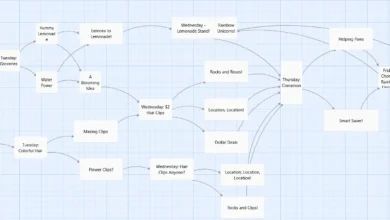Media Briefing: Podcasters test different types of paywalls for subscriptions

This Media Briefing covers the latest in media trends for Digiday+ members and is distributed over email every Thursday at 10 a.m. ET. More from the series →
This week’s Media Briefing looks at a hot topic at this year’s annual podcast business summit On Air Fest: podcast subscriptions, and how to grow them as a complement (or alternative) to advertising revenue.
- Podcasters discuss testing different subscription offerings at the On Air Fest podcast business summit.
- Hearst CEO’s predictions for a challenging 2025, The New York Times approves usage of some internal AI tools, and more.
Testing different podcast subscription offerings
Podcasters are testing a variety of audio subscription offerings to grow recurring revenue as a complement (or alternative, in some cases) to advertising.
Podcast executives discussed the different ways in which they are getting audiences to convert to paid listeners at the annual On Air Fest podcast event, which was hosted by Bloomberg Media in Brooklyn, New York yesterday.
Turns out, there isn’t only one way to go about this. Podcast execs shared the variety of subscriptions offerings they’ve introduced recently, as well as all the different platforms they’re using to do so.
The New York Times launched its own audio app in May 2023 and introduced subscriptions on Apple Podcasts and Spotify in October 2024, putting some podcast content behind a paywall.
“The data is still pretty early. We’re just a few months in,” said Ben Cotton, svp and head of subscription growth at The New York Times. “But we’re optimistic about it so far. We have to wait and see in terms of things we typically look at [to measure our] subscriptions businesses. It’s not just how many people convert, but how many people engage, how likely we are to retain them – preventing churn is a big part of what we do. And that’s measured in months and years.”
One of the subscription offerings the Times is testing is “access rules” — such as for its shows “Hard Fork” and “Modern Love” — where listeners can consume the most recent episodes for free, but have to pay to listen to those shows’ archives. It’s one “entry point” to get listeners to come into The Times’ audio universe, Cotton said. Cotton didn’t say how many episodes are freely available, but a Digiday review of the shows’ podcast feeds shows the two most recent episodes are available for most Times podcasts.
Shows under The Times’ Serial Productions arm have a different subscription model for more evergreen content, where listeners have to pay for early access or to listen to an older season, Cotton said. Cotton didn’t specify how long those episodes are available only to subscribers, or how long episodes are freely available.
Cotton was “optimistic” that this strategy was allowing people to choose a combination of ways to listen to the Times’ audio offerings, without “cutting off our future audience.”
Recho Omondi, host and creator of the fashion podcast “The Cutting Room Floor,” said onstage that videos are what helped drive her podcast subscription business on Patreon. Omondi debuted her show in 2018 and started making money from that show on Patreon in 2021.
Since she started creating video podcasts for her show about a year ago, “everything grew,” including Patreon subscribers and her social media followers, Omondi said. She attributed that growth to people discovering her show through platforms like YouTube. Last year, she brought in $400,000 from Patreon, she said.
However, the age-old dilemma of a subscription business is how to balance it with advertising revenue, as podcast subscriptions typically offer ad-free listening. Putting content behind a paywall risks losing out on revenue from ads on that podcast, so enough people would have to pay to make the strategy worth it. One exec told Digiday (on the condition of anonymity) that they are seeing a subscriber conversion rate of 2-5%.
Justine Kay and Natasha Scott-Reichel, hosts of the podcast “2 Black Girls, 1 Rose,” have had to test different business strategies to figure out that balance. Like Omondi, they started their subscription business on Patreon, back in 2019. They put all of their content behind the paywall at that time, before shifting to putting all of their content in front of the paywall in 2023 to grow their advertising business. Now people pay for bonus content.
“We had to give people more meat to enticed [them] to join [our Patreon],” said Scott-Reichel. “It was a new strategy to help grow our Patreon because at some point it started to plateau. So the only thing we can do is put more content out for free, which would [also] help with more ad revenue.” Advertising now makes up a fourth of their overall revenue, she said.
Leon Neyfakh, co-founder of Prologue Projects and host of the “Slow Burn” podcast said his company sometimes takes the approach of moving premium content in front of the paywall when an episode is particularly important or popular. For example, an interview with President Donald Trump on the Supreme Court-focused show “Five Four” was offered for free because “it was a hit with our membership.”
“Subscriptions are getting to a point where it’s an exciting and relevant revenue stream,” Steve Ackerman, evp and head of global podcasts at Sony Music Entertainment, said during a breakout session. “We have some shows that work and make a profit because they have both [subscription and advertising] streams running.”
What we’ve heard
“We see these two paths as one and the same. We are open to exploring opportunities to establish relationships with AI companies that reflect the intellectual property and value of our journalism. In the same vein, we will continue protecting our digital intellectual property, including receiving proper payment for our work, and are prepared to take action to enforce our rights.”
— The Guardian spokesperson on why the company signed a deal with OpenAI the same week it participated in a lawsuit against Cohere, another AI tech company.
Numbers to know
44.7 million: The number of digital subscribers to the world’s biggest English-language paywalled news and magazine publishers, a 13% year-over-year increase.
100: The number of digital creators Yahoo has signed up to post content to its website.
20: The number of people laid off at Outside.
$115,000: The cost of an ad that The Washington Post declined to run for a “Fire Elon Musk” campaign.
What we’ve covered
Publishers find new revenue stream by posting clips of event videos on LinkedIn
- LinkedIn is encouraging publishers that are part of its pre-roll video advertising program LinkedIn Wire to post more on the platform
- Publishers have found they can do so with little additional effort, in part by clipping videos taken at their conferences and other events.
Read more about how publishers are making money from videos on LinkedIn here.
Rockstar Games wants “Grand Theft Auto VI” to be its next big metaverse platform for creators
- Rockstar has been in discussions with top Roblox and Fortnite creators, as well as dedicated “GTA” content creators, about the potential to create custom experiences inside “GTA 6,” which will release later this year.
- These experiences would allow creators to modify the game’s environment and assets to bring their own intellectual property — and potentially their brand sponsors — into “GTA’s” virtual sandbox.
Read more about Rockstar’s plans for the platform here.
Site traffic declines are publishers’ biggest concern this year
- Traffic declines and the economy: Those were the biggest challenges publishers faced last year, and they’ll be on repeat again this yea, according to a Digiday+ Research survey.
- Over half of publishers told Digiday that their traffic decreased from the beginning of 2024 to the end. And also a quarter of publisher pros said their traffic decreased significantly last year.
Find out more from the Digiday+ Research survey here.
What we’re reading
Hearst CEO predicts difficult year ahead
Hearst CEO Steve Swartz told employees in his annual letter that despite a record $13 billion in revenue in 2024, this year would be a challenging one for the business due to the lack of political ad dollars without an election this year and with cord-cutters impacting the A+E Networks business, according to The Hollywood Reporter.
The New York Times gives thumbs up to product and editorial staff to use AI tools
The New York Times is debuting a new internal AI tool, as well as giving the OK to its product and editorial staff to use certain AI tools to help write social copy, SEO headlines and code, Semafor reported. However, the company told staff not to use AI to write articles or circumvent paywalls, among other uses.
The Guardian signs deal with OpenAI
The Guardian has signed a content licensing deal with AI tech company OpenAI, the company announced. Guardian reporting will be available as a news source within ChatGPT and the publisher will use OpenAI’s tech to develop new products, features and tools.
News/Media Alliance lawsuit against OpenAI
A number of legacy publishers – including Condé Nast, McClatchy, Vox Media, and others – sued AI startup Cohere for copyright and trademark infringement, The Wall Street Journal reported. The publishers said the company improperly used at least 4,000 copyrighted works to train its large language model.



